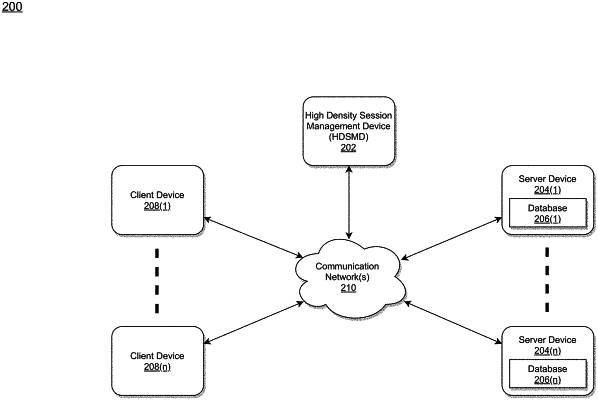| CPC H04L 43/0876 (2013.01) [H04L 67/14 (2013.01)] | 20 Claims |

|
1. A method for implementing a high density session manager module by utilizing one or more processors and one or more memories, the method comprising:
creating a master session in response to receiving login input data from a high density session manager master module, wherein the high density session manager master module configures a session manager with self-healing feature to auto initiate lost session; executes high density session manager RESTful service for dynamic high density session configuration; executes high density session manager application programming interface for configuration management; executes self-service web portal to onboard new servers and monitor key performance indicators; executes high density session manager logger to collect vital statistics and exceptions; and executes high density session manager database objects for persistent state data;
accessing, in response to creating the master session, a configuration database that stores configuration file and logging information data corresponding to a plurality of child sessions each including corresponding functional user identifier (ID);
retrieving the configuration file and logging information data from the configuration database;
dynamically creating, based on the retrieved configuration file and logging information data, multiple simultaneous and interactive server sessions among the plurality of child sessions;
running the dynamically created multiple simultaneous and interactive server sessions on a single server, wherein each server session is running with a separately logged in functional user ID; and
monitoring health of each server session running on the single server.
|